Masterpiece Story: Portrait of Madeleine by Marie-Guillemine Benoist
What is the message behind Marie-Guillemine Benoist’s Portrait of Madeleine? The history and tradition behind this 1800 painting might explain...
Jimena Escoto 16 February 2025
Rembrandt van Rijn married Saskia van Uylenburgh in 1634. They were together for only eight years before she died after childbirth, probably from tuberculosis. He painted her many times during her life and after her death. For him, she was Flora: spring, life, love, and beauty.
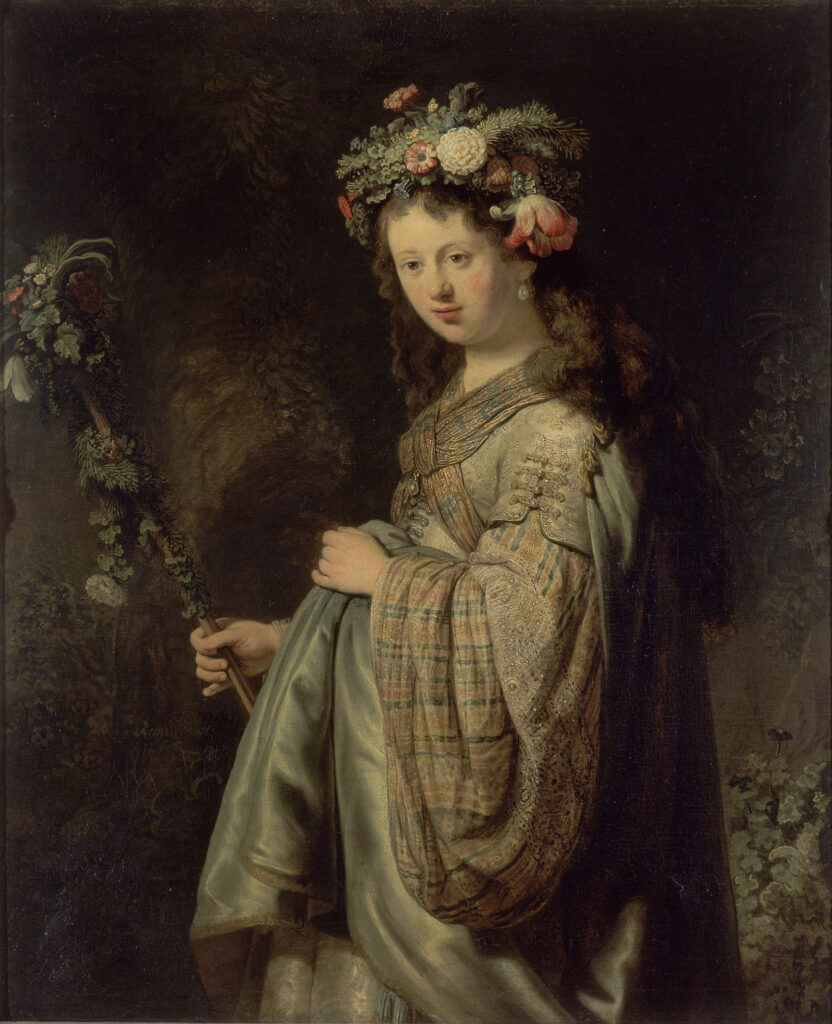
Rembrandt van Rijn, Saskia van Uylenburgh as Flora, 1634, State Hermitage Museum, St. Petersburg, Russia.
Saskia van Uylenburgh was born into a well-to-do Dutch family in 1612. Orphaned at a young age, she was raised by an older sister to be well-educated and independent. She might have been expected to marry young to a wealthy and well-born suitor, but instead, she traveled to Amsterdam in 1631, in the company of two artists, to visit her cousin. He was Rembrandt’s agent, and the artist lived and worked in his home.
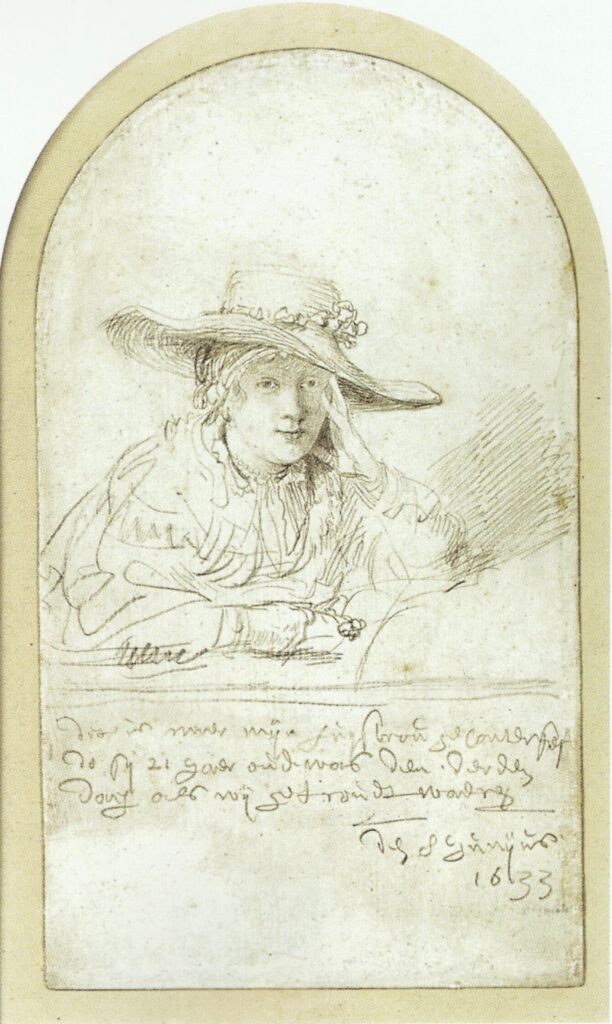
Rembrandt van Rijn, Portrait of Saskia, 1633, (silverpoint), Staatlicht Museen, Berlin, Germany.
She married Rembrandt van Rijn (1606-1669) despite family protests. He was a miller’s son, socially beneath her, and only just establishing himself as an artist. Rembrandt certainly took advantage of Saskia’s wealth, buying an expensive property on the fashionable Jodenbreestraat.
However, by all accounts, this was a love match that was cut tragically short by her death in 1642. In his 1633 drawing, Saskia stares dreamily at him, and Rembrandt records that they have been married for three days, almost as if he cannot believe his luck.
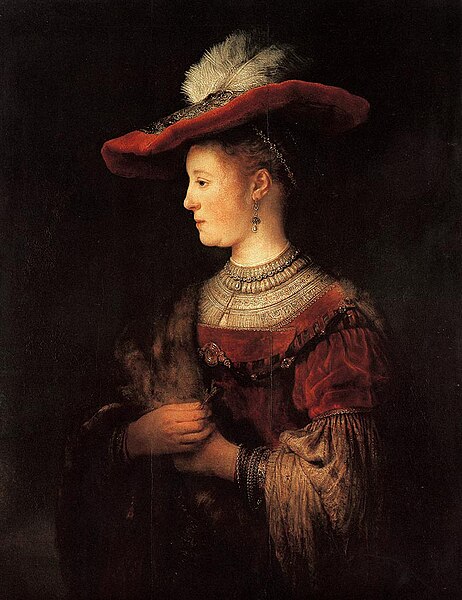
Rembrandt van Rijn, Portrait of Saskia in a Red Hat, 1633-1642, Gemäldegalerie Alte Meister, Kassel, Germany.
Rembrandt was left a widower with a baby son, Titus. According to Saskia’s will, he would lose her money if he remarried, so for the rest of his life, although he had two long-term mistresses, he remained single.
However, by the end of his career, Rembrandt’s work was out of fashion, and he was destitute. He had to sell the home he had enjoyed with Saskia and move into rented accommodation. He sold portraits of her, which he had kept by his side for years. Eventually, he even had to sell her tomb.
Saskia in a Red Hat was started in the early years of their marriage but was not completed until after her death. She is represented as young and elegant, richly dressed, and shown in profile like a Renaissance noblewoman. The red of her costume glows with warmth, and she holds a sprig of rosemary for remembrance. Yet in 1652, Rembrandt had to sell the memory of the darkness.
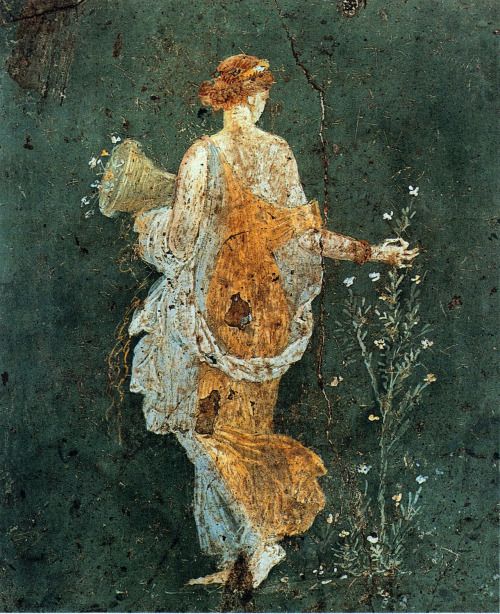
Flora, (fresco from the Villa di Arianna in Stabiae near Pompeii), 1st century CE, Museo Archeologico Nazionale, Naples, Italy.
All that was far in the future when Rembrandt chose to celebrate his new bride by painting her in the guise of Flora, the Roman goddess of Spring. Flora was associated with flowers, fertility, and youth, and was usually represented, as seen in a fresco from Pompeii, as a beautiful young woman, carrying flowers or a cornucopia.
Rembrandt shows Saskia as Flora with a garland of flowers tumbling through her hair, holding a staff entwined with more blooms, and standing in a shadowy floral grotto. She looks young, innocent, and almost slightly embarrassed, her gaze not meeting ours. Her girlishness seems at odds with the luxurious costume of silks, furs, and embroidery that almost swamps her and adds to the feeling of abundance. The bunched drapery and position of her hand over her stomach hint at future fertility and the prospect of a child. She was probably pregnant with one of the babies she would lose.
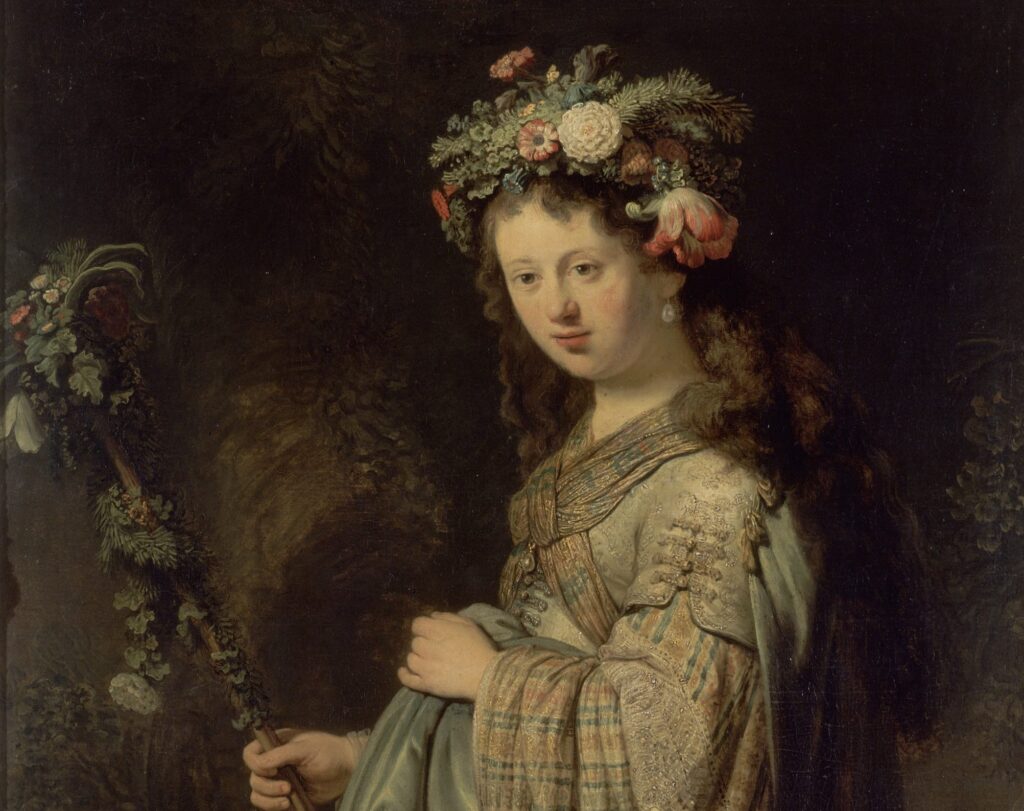
Rembrandt van Rijn, Saskia van Uylenburgh as Flora, 1634, State Hermitage Museum, St. Petersburg, Russia.
Undoubtedly, the most famous image of the goddess Flora is that of Botticelli’s Primavera, where he embellishes the Roman model, creating a woman who wears flowers as well as carries them. This illustrates her whole backstory amidst a carpet of spring blooms. Botticelli’s work helped to create a new fashion for representations of Flora, who was, for the Romans, a fairly minor goddess. At the start of his career, Rubens produced a similarly expanded version, Flora and Zephyr.
Titian’s 1515-17 interpretation, which the Spanish ambassador in the Netherlands owned, was likely a direct inspiration for Rembrandt. The woman in Titian’s painting is partially clothed in simple classical drapery, and more obviously references the ideal of a goddess. However, there is the same focus on her against a darkened background and the same detached, sideways glance as in Rembrandt’s version. She holds out a handful of flowers, but there is no sense that they are for us.
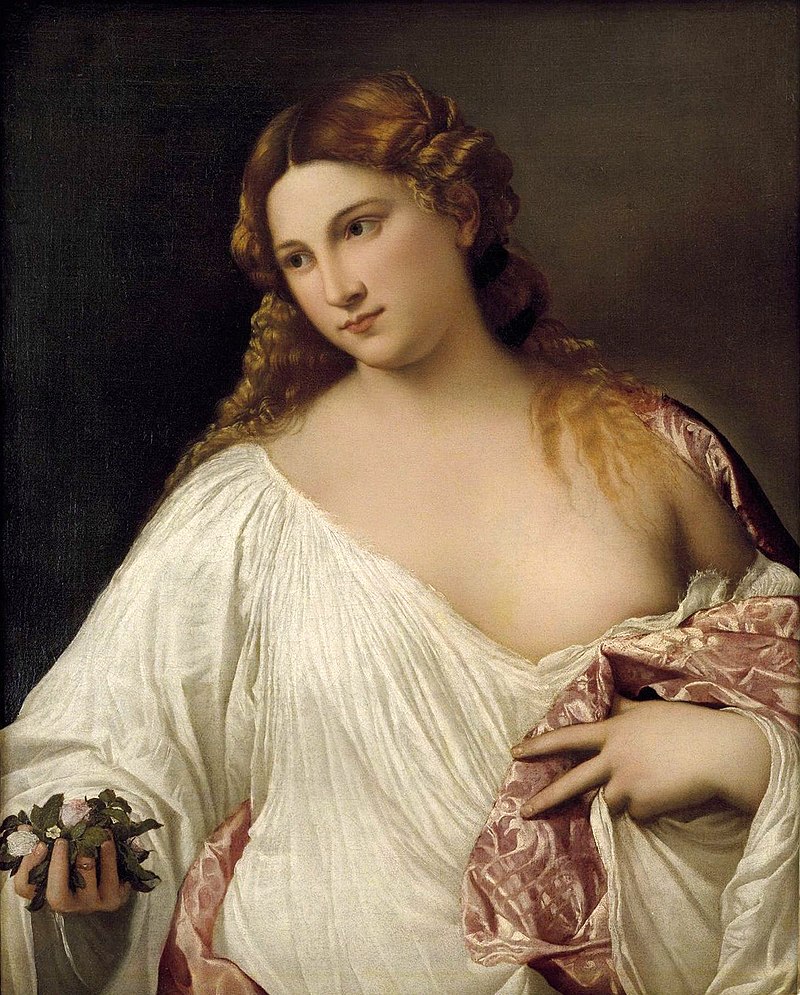
Titian, Flora, 1515-17, Uffizi Gallery, Florence, Italy.
Rembrandt returned to the theme of Saskia as Flora more than once. The National Gallery’s version in London, usually titled Saskia van Uylenburgh in Arcadian Costume, was painted just a year later. Yet, the girl of 1634 has become a woman, confident and outward-facing. She appears to be in conversation with the artist, her mouth slightly open. There is a strong shaft of light as if a curtain had been opened. The staff is the same, now used as a walking cane; the flowers in her hand could almost be the same garland now removed from her head – as if she has once more taken up the costume at his request.
Everywhere, there is a sense of abundance. You see it in Saskia’s free-flowing hair, the detailing on her costume, and the great swags of fabric in the sleeves. There are jewels: pearl-drop earrings, necklace, and chain about her waist, and a hint of a gold circlet in her hair. Her figure suggests fertility, with its ample breasts and stomach – again, she might be pregnant. And the tumbling flowers of the bouquet serve to emphasize this abundance, both themselves and in the shadow they cast on her dress.
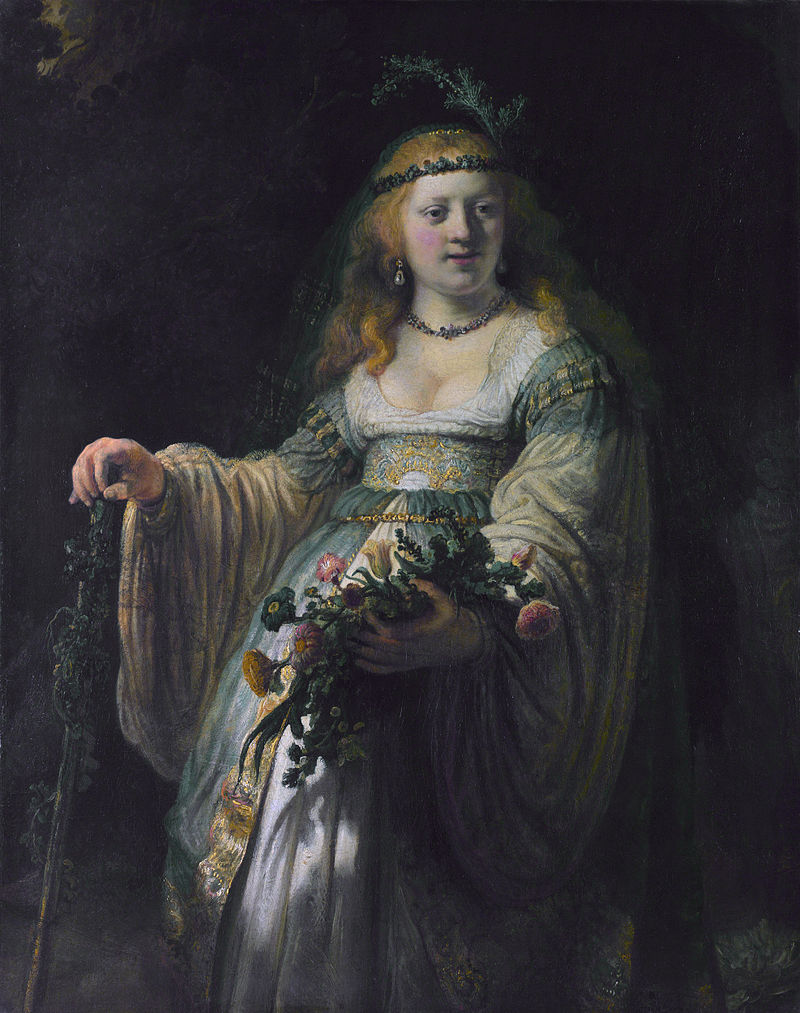
Rembrandt van Rijn, Saskia van Uylenburgh in Arcadian Costume, 1835, National Gallery, London, UK.
Twenty years later, Rembrandt delved deep into his memory, producing the version now in the The Met in New York City. This is not a direct portrait of Saskia, who had been dead for over a decade, but her ghost lingers. Equally, it is a very different interpretation of Flora, who is now a simple peasant girl wearing a decorated hat. Her head turns away, the strong profile taking her out of our reach. She is older, though not old. The dark eyes have a sorrow. The flowers are no longer ample, blousy blooms but small, herb-like sprigs that she has gathered in her skirts and now offers to an unseen figure.
The looser brushwork of Rembrandt’s later style, combined with the deep, dark folds on the white sleeves of her blouse and the encroaching background, almost threatens to swallow her up, creating a melancholy air. The shadowy fold of material she holds up establishes a barrier between her and the viewer, a further sense of distance. She is still called Flora, but there is little that is spring-like about the image.
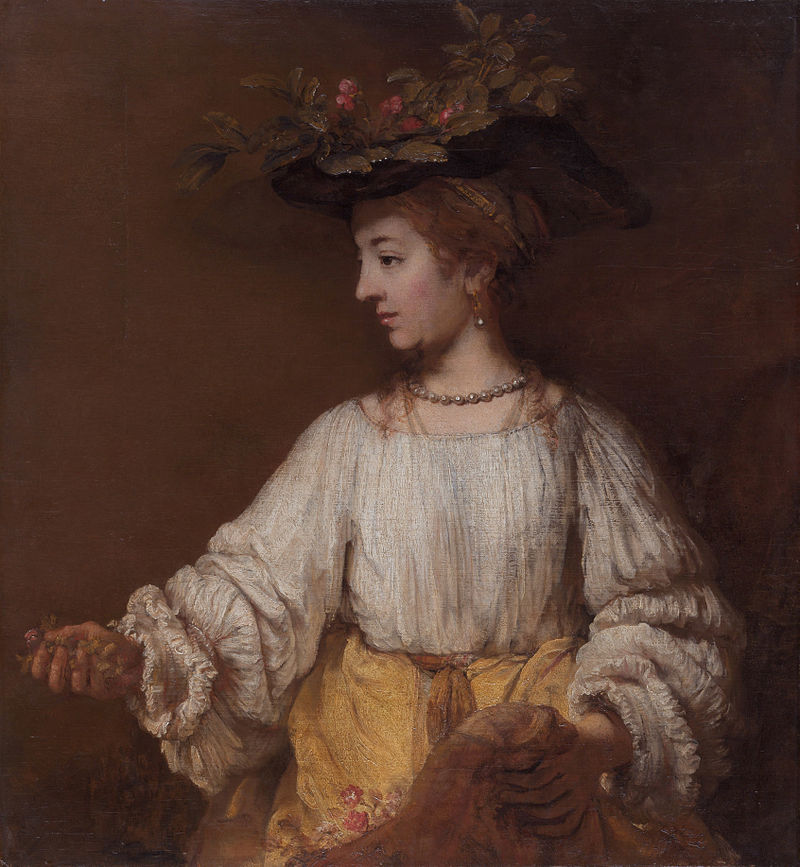
Rembrandt van Rijn, Flora, c.1654, The Metropolitan Museum of Art, New York City, NY, USA.
In one sense, these representations of Saskia as Flora are just part of a much larger body of work in which Rembrandt used his wife as a model. He painted her in the guise of other goddesses, including Bellona, the Roman war deity wearing a breastplate and helmet and carrying a shield. He depicted her as Minerva, goddess of wisdom, wearing the laurel wreath of victory and looking up from a large book. There is an etching of her as St. Catherine, and she modeled for a painting of the Old Testament heroine Judith.
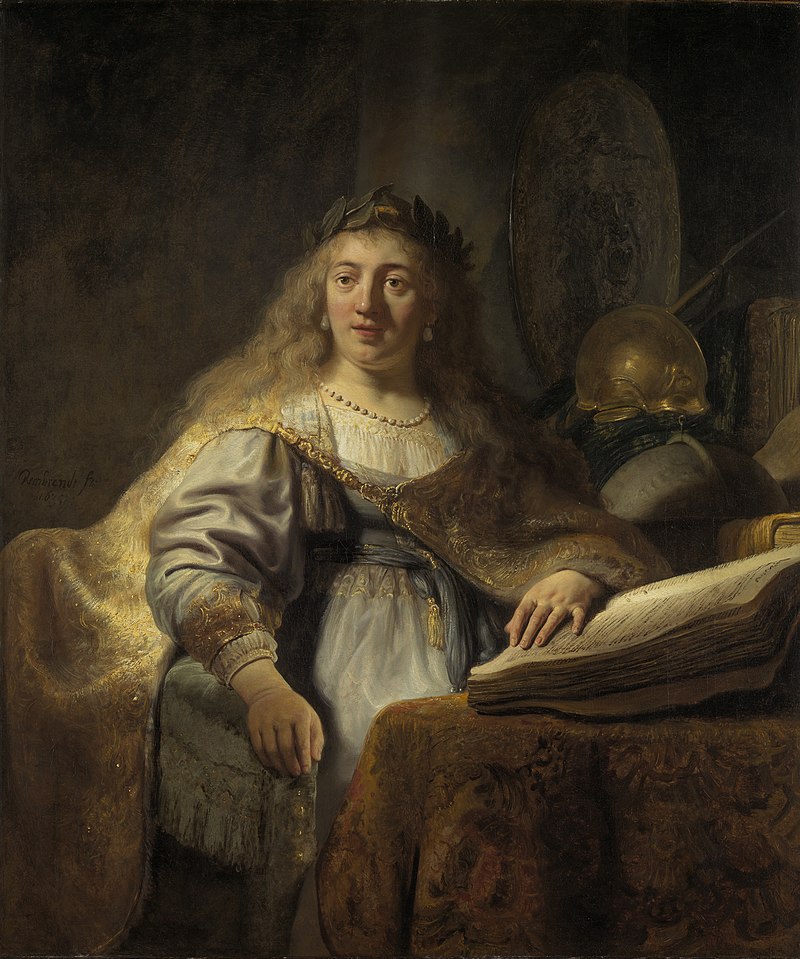
Rembrandt van Rijn, Minerva in her Study, 1635, The Leiden Collection, Leiden, The Netherlands.
There is debate about whether these female figures are really portraits of Saskia or more generic depictions of women. It doesn’t matter. Whether Saskia sat for these paintings or not, it seems apparent that she was Rembrandt’s ideal. And when he painted other women, he always saw them through the filter of his wife. In that sense, for Rembrandt, Saskia was Flora: bringer of life, beauty, and inspiration, immortal despite her tragically early death.
DailyArt Magazine needs your support. Every contribution, however big or small, is very valuable for our future. Thanks to it, we will be able to sustain and grow the Magazine. Thank you for your help!